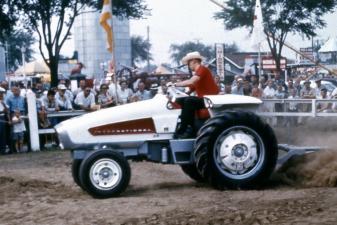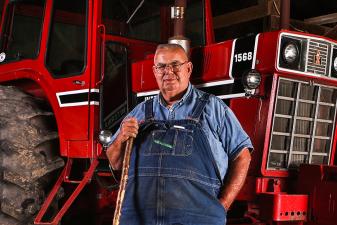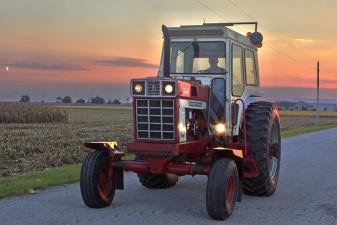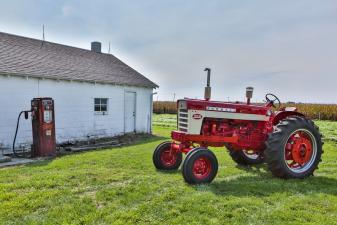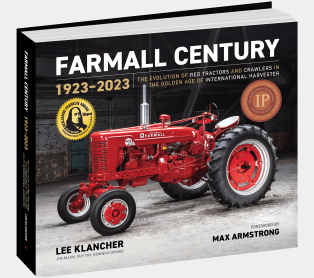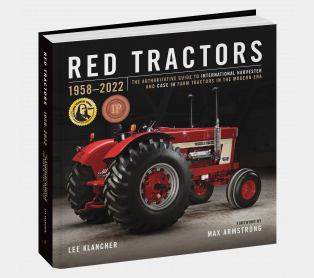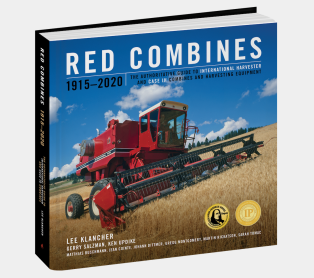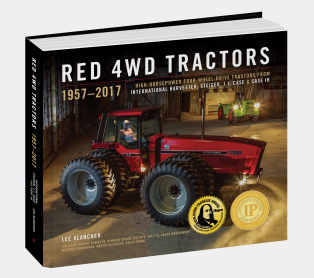The Farmall 1206

In this excerpt from Red Tractors 1957-2022 by Lee Klancher, the legacy of the 1206 is told.
Just as the H and M had taken the agricultural world by storm, the 706 and 806 proved that Harvester’s engineering team was capable of designing robust and reliable machinery. And even as those first of the 06 series tractors were an immediate success, Harvester’s Farm Equipment Division (FED) had a higher-powered tractor in mind. Consideration of the 1206 Farmall began in the early 1960s when the FED began planning a large diesel-powered row-crop tractor in the 100-plus-horsepower category that would also deliver up to 12,000 pounds of pull.
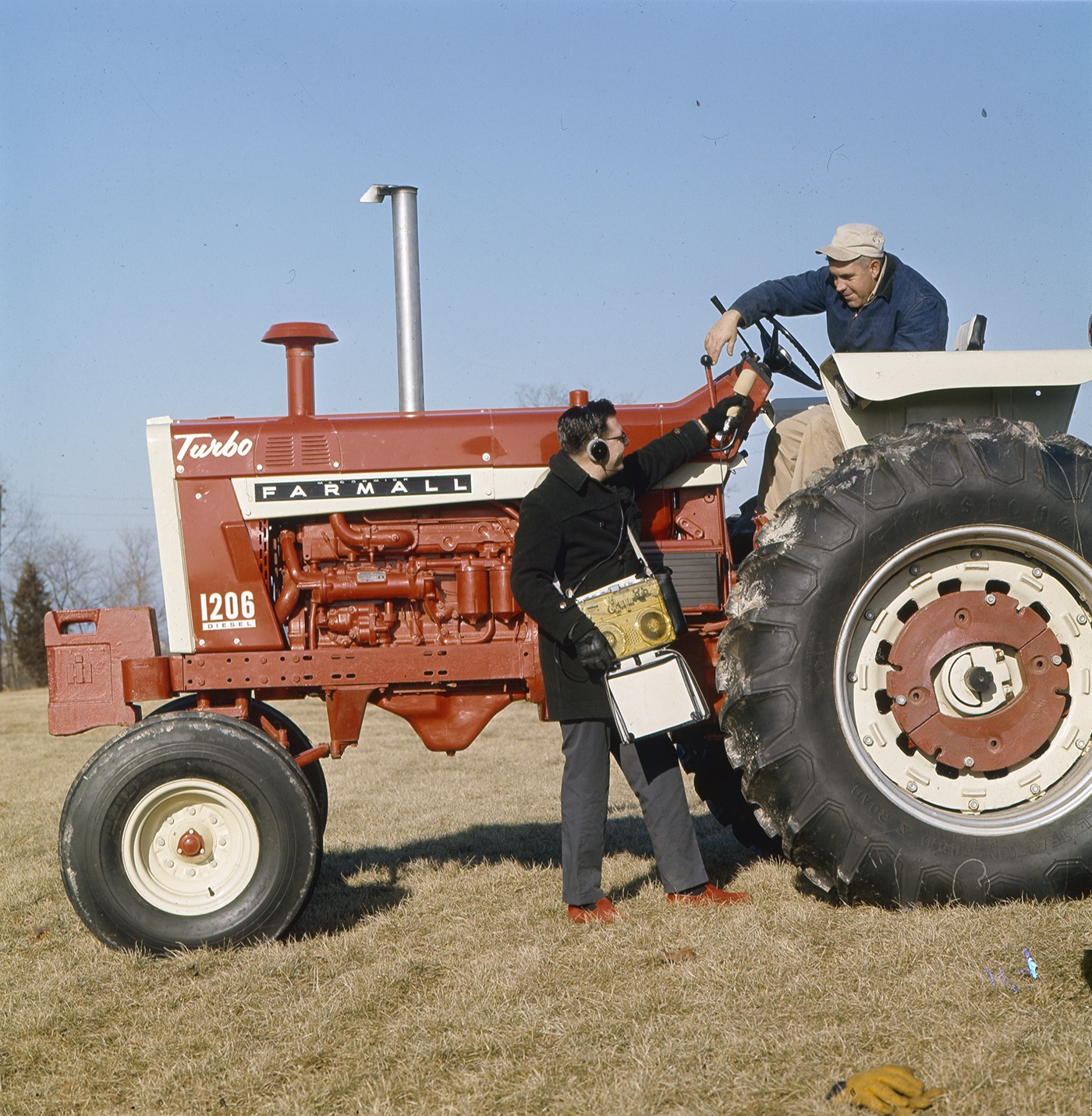
With its big, turbocharged powerplant, straight pipe, and muffler-less exhaust, the 100-plus-horsepower Farmall 1206 Turbo was the darling of machinery journalists all over the countryside. Wisconsin Historical Society
The 1206 was scheduled to enter production in January 1964, but there was a problem with commercially available tractor tires of the time. The 1206 prototypes delivered so much power to the ground that they literally tore their tires from the rims. The 1206’s improved 18.4x38 tires took about a year to develop. With the new severe-duty tires mounted, the Farmall 1206 was finally released to production in 1965. The model was tested in Nebraska Tractor Test #910 from September 8 to September 23, 1965.
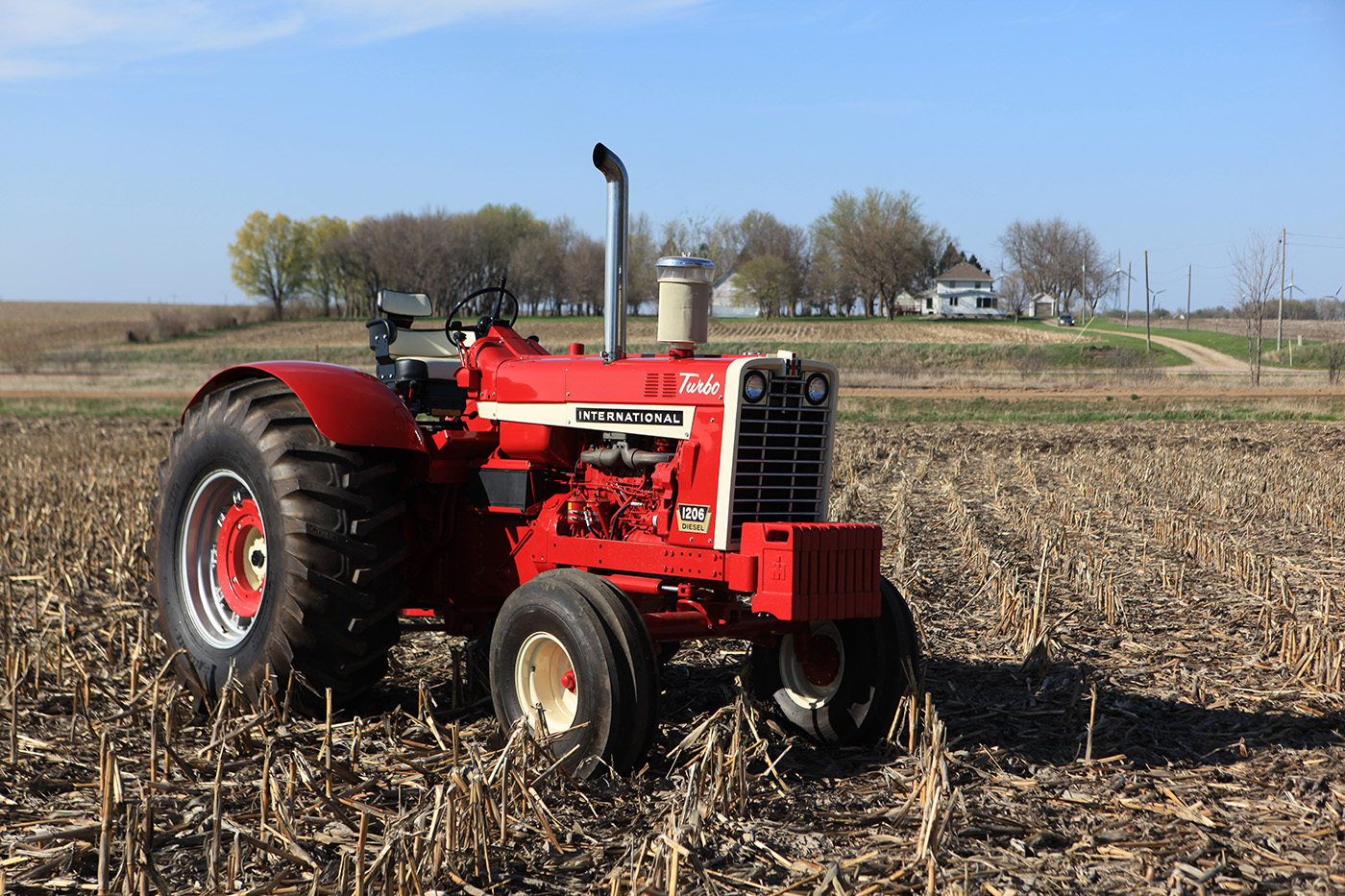
This later-model Farmall 1206 Wheatland is equipped with the adjustable wide front axle and deluxe fenders. The International 1206s had the headlights in the grille, whiile the Farmall versions had them mounted in the fenders. The fenders on the Intertnational model were red, while the fenders on the Farmalls were painted white. Lee Klancher
The 1206’s design incorporated many upgrades and new parts to ensure that all relevant components were appropriately matched to the increased power load. Indeed, the tractor’s powerplant itself was largely new although a quick glance didn’t make that clear. The 1206’s DT-361 engine was a turbocharged version of Harvester’s proven 361-cubic-inch engine found in the 806, the differences between the two were considerable.
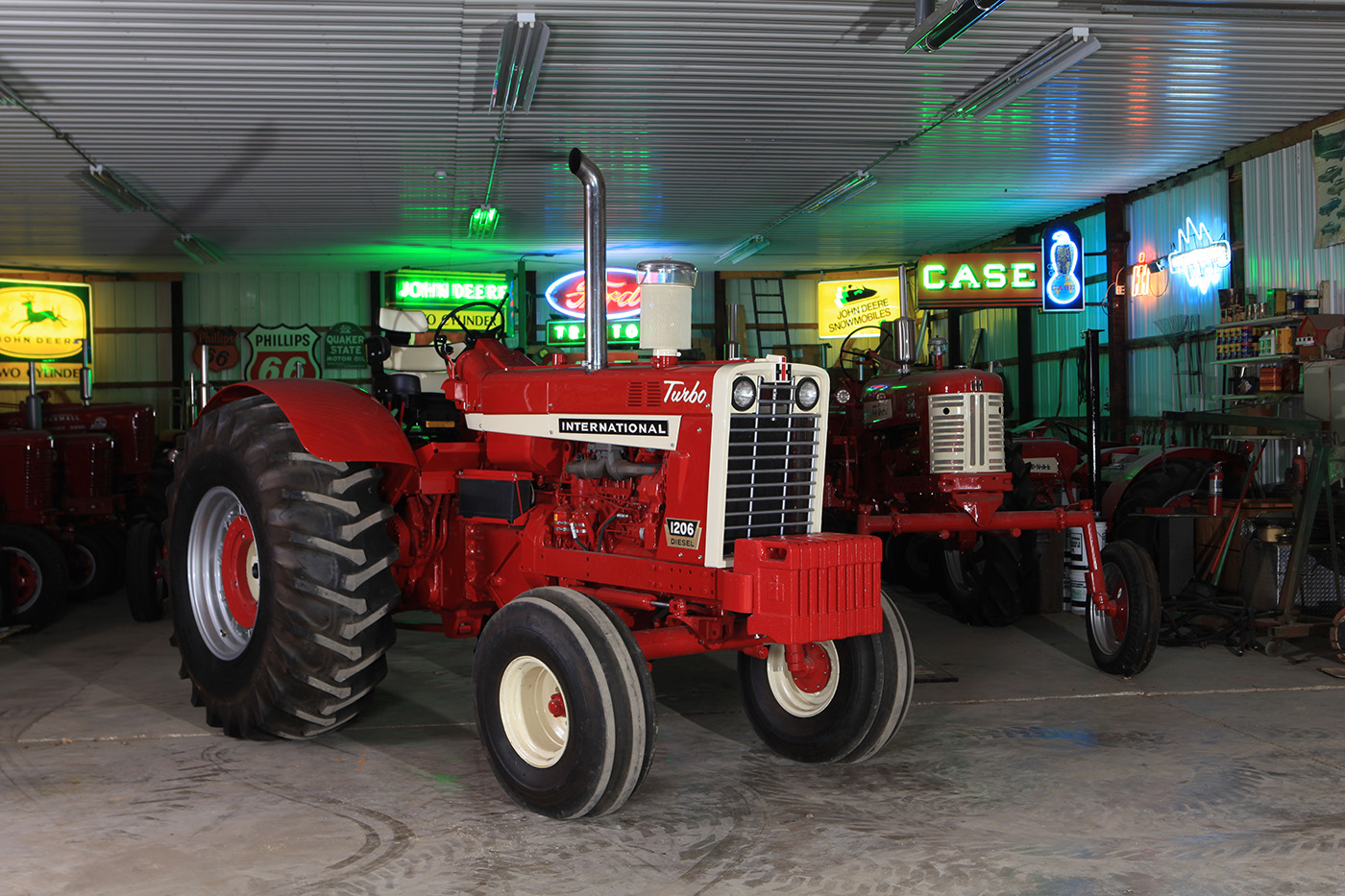
FED engineers recognized that squeezing more than 100 horsepower from the D-361 was going to take more than just pressurized aspiration and additional fuel if the engine was to be reliable. Engineers from FED and Solar Turbine, then International’s wholly owned subsidiary (now owned by Caterpillar), collaborated on redesigning the 361-cubic-inch engine to handle the extra power and the increased air and fuel loads the turbocharger would provide. Once in production, the DT-361 as it was installed in the 1206 used a Solar Turbine turbocharger designed specifically for the project.
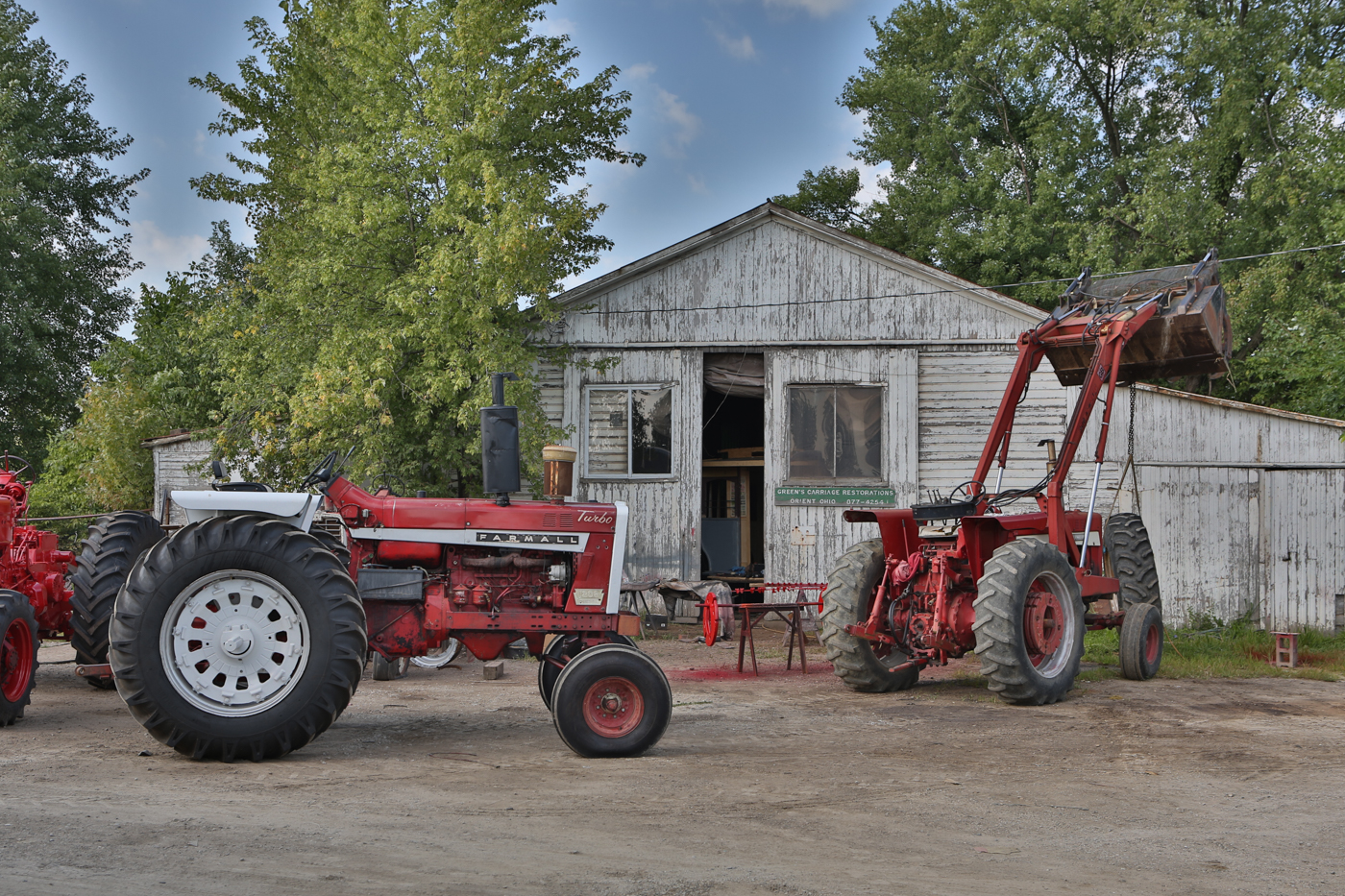
The DT-361 featured a specially hardened and strengthened crankshaft that turned on seven main bearings, had larger oil passages, and was engineered to be 100 percent stronger than that used in the D-361. To help keep things cool, the DT-361 was equipped with twin-jet oil-cooled pistons; a larger 10-inch-diameter, dual-stage, dry-type air cleaner; a higher capacity cooling system and radiator; larger oil cooler; and higher-airflow cooling fan.
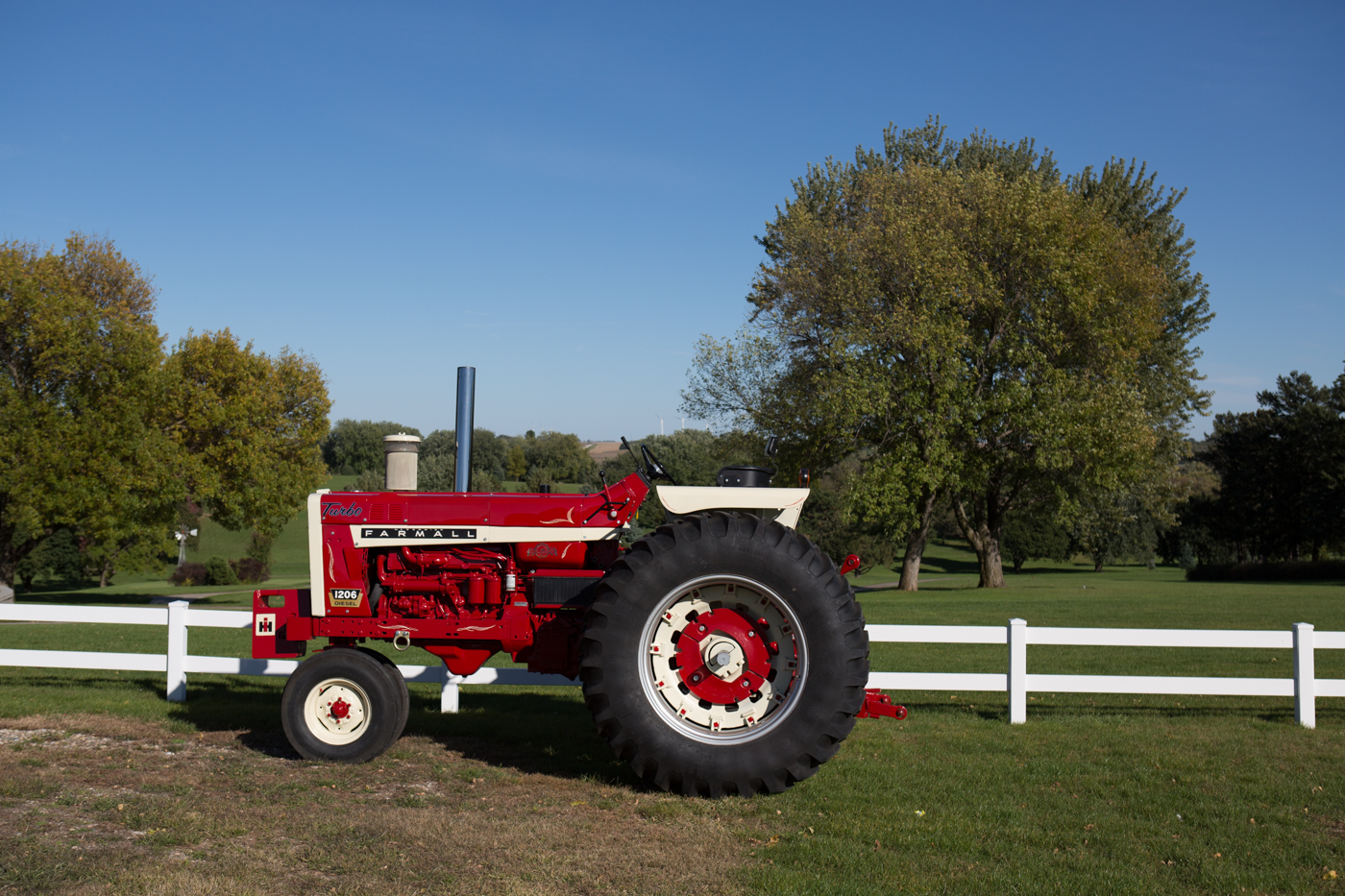
FED engineers also paid special attention to the 1206’s clutch, transmission, and final drives. The specially designed drivetrain was filled with stronger hardened gears than those in the similarly designed 806. The 1206’s bull-pinion and bull-gear final drives were also a full half-inch wider on the 1206. The 1206’s power takeoff drive gearing and bearings were also beefed up and the tractor was equipped with a 14-inch-diameter, six-pad Dyna-Life clutch (compared with the smaller four-pad clutch in the 806). With the optional heavy-duty hydraulically actuated Torque Amplifier the big tractor had an effective 16 forward speeds.
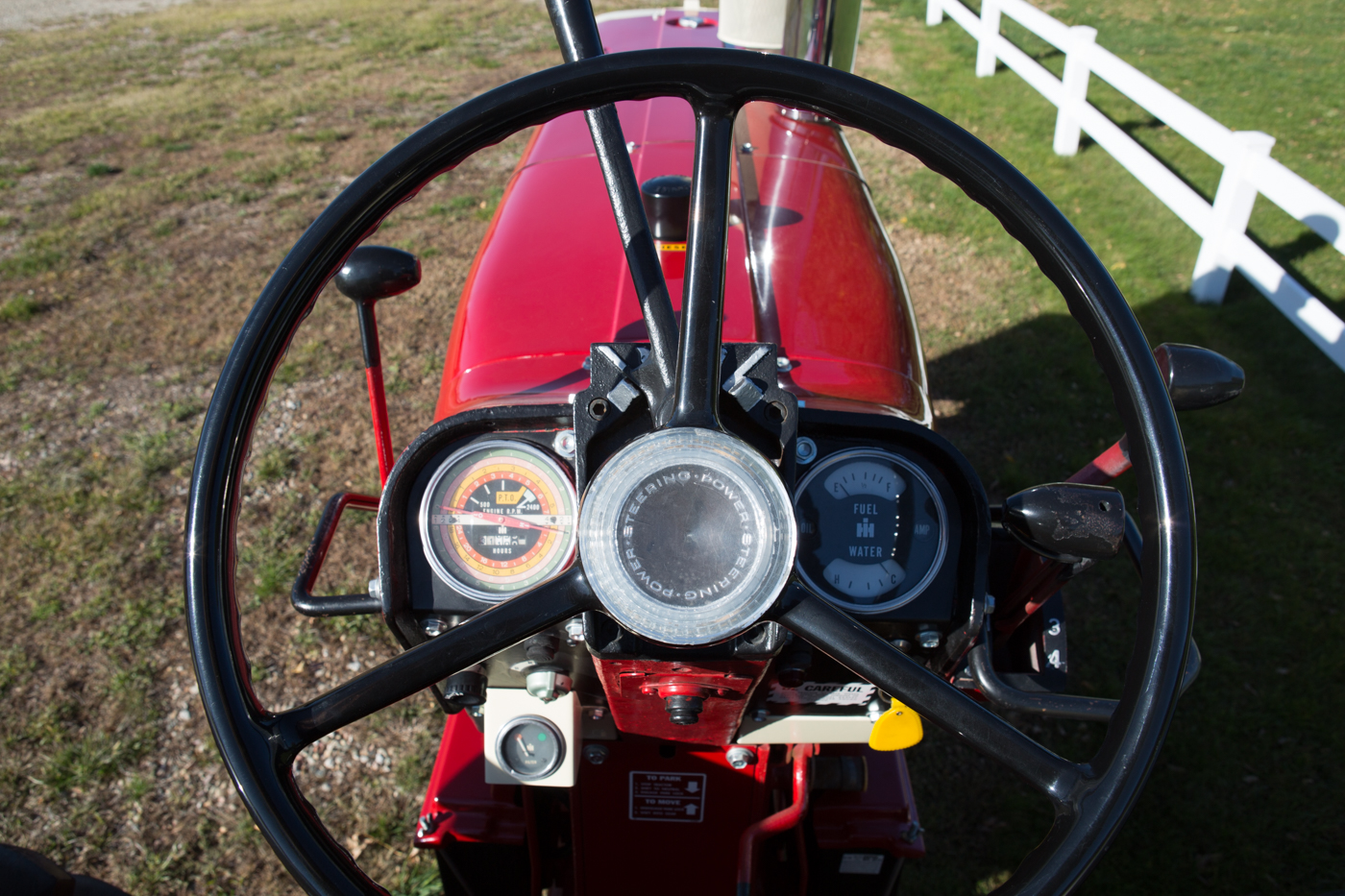
When first released, the Farmall 1206 was equipped with a new welded tubular steel grille instead of the 806’s cast grille. Shortly after its initial release, the Farmall 1206 received the cast-iron grille housing. Identification included a gold-trimmed “Turbo" decal in scripted lettering on each side of the hood’s front. Other decals included the numeral 1206 with “Diesel” beneath it on the lower front of the side panels. On later machines, this decal was changed to a metal badge. The Farmall version of the 1206 could be ordered with an adjustable wide front or the traditional narrow front, enclosed cab, Fast Hitch with removable three-point links, and dual rear wheels. It came standard with the new flattop deluxe fenders.
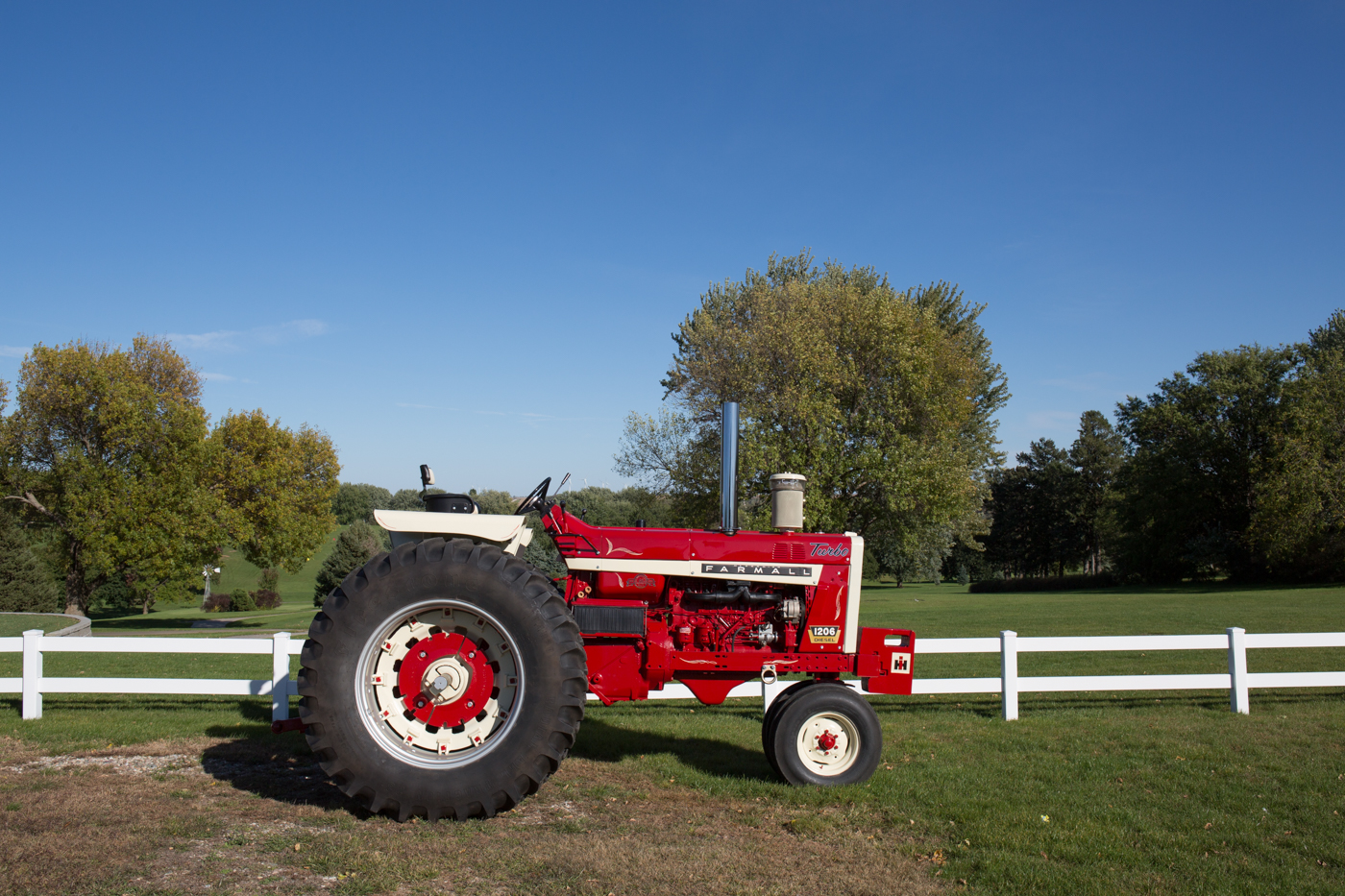
Alongside the Farmall 1206, International Harvester also released the International 1206 Standard and a Wheat Land version. The International 1206’s styling was similar to that of the Farmall version with a most notable exception being that the big rounded fenders were painted red.
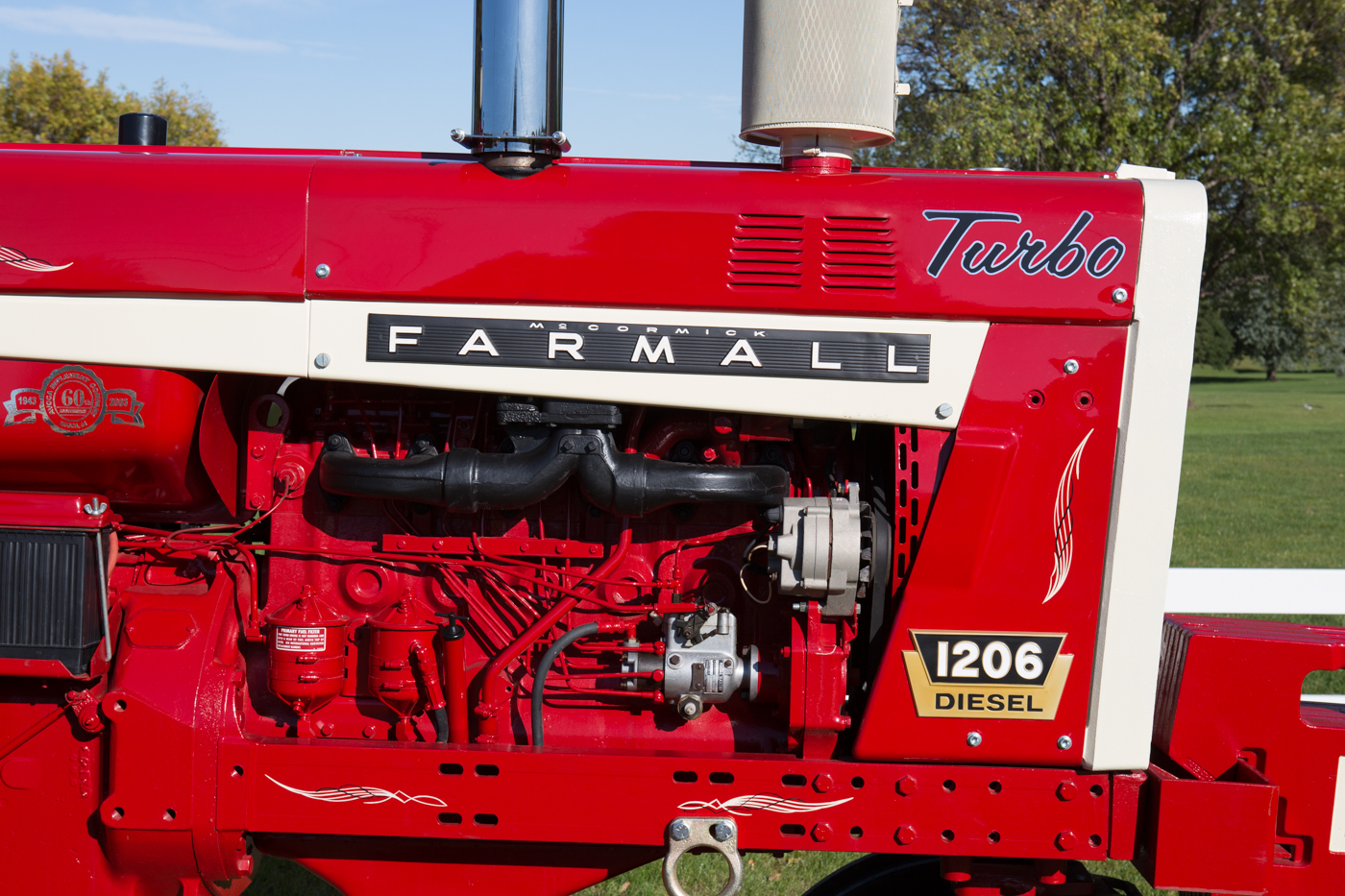
What did farmers think about the 1206 in its day? They loved it. By the time it was replaced in late 1967 with the more powerful 1256, close to 10,000 of the beasts had been sold. The 706, 806, and 1206 were upgraded to the 756, 856, and 1256 in 1967 for release in 1968.
PRODUCTION FIGURES / SERIAL NUMBERS
Farmall 1206
1965: 7501–8625
1966: 8626–12730
1967: 12731–15903
Total production: just over 8400 units
International 1206
1965: 7501–7771
1966: 7772–8491
1967: 8492–9090
Total production: slightly less than 1600 units
Data from article by Sherry Schaefer in Heritage Iron Magazine--check out her great article on the 1206 here.
Note that TractorData.com lists 1289 International 1206s built, while the 1206 article in Heritage Iron magazine lists just under 1600. We believe the Heritage Iron numbers are correct, and are researching that. We will update this listing if we find a definitive source.
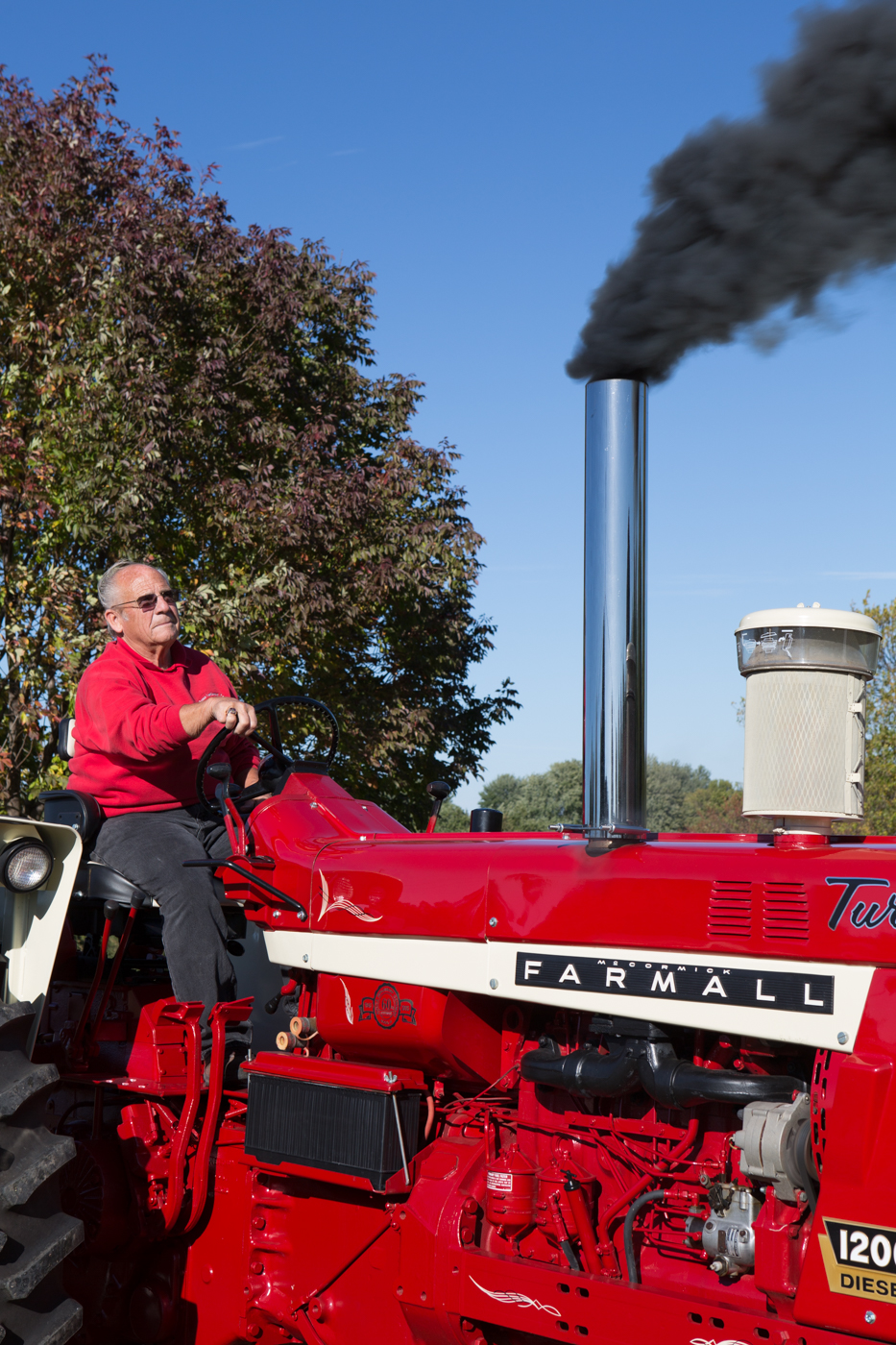
If you enjoyed this post, check out Red Tractors 1957-2022 for much more about International Harvester and the machines they built.


